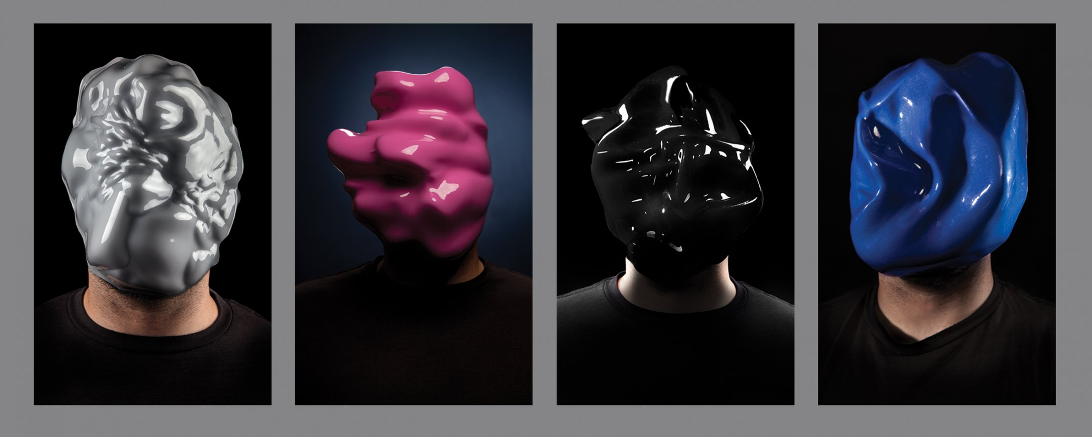
In her essay “Queer-alt-delete: Glitch Art as Protest Against the Surveillance Cis-Tem” (2018), queer studies scholar Andie Shabbar makes the following claim: “[T]he point of a protest is to unleash potentials that effectuate political transformation and social change… Protest is an uncertain, contingent, and indeterminate event fueled by the affective intensities of frustration, anger, vulnerability, and hope that engender embodied participation” (200). It is unsurprising, then, that protest art pieces critiquing systems of biometric control foreground the centrality of the body and its facial identifying features. The artist Zach Blas’s wearable art pieces, or “masks,” offer one such point of intervention. The four different masks of his Facial Weaponization Suite (2011-2014) correspond to different axes of securitization: the ethno-citizenship profiling of undocumented people and their “lookalikes” (grey), the perceived gender and sexual excess of queer and gender-nonconforming individuals (pink), the distrust and perceptions of violent threat imparted upon Black subjects (black), and the requirements for visibility and transparency for hijabi and niqabi Muslim women (blue).
For example, Blas’s three-dimensional shape for the pink mask, entitled Facial Weaponization Communiqué: Fag Face, was created through an aggregate of biometric data provided by several queer volunteers, which was then glitched to be rendered unrecognizable as (but still suggestive of) a human face. The artist describes his process as “a response to scientific studies that link determining sexual orientation through rapid facial recognition techniques.” The series gestures toward a political protest method of informatic opacity, one that identifies both the vulnerabilities produced by biometric technologies, and the need for targeted obfuscation in response. Blas’s video installation Face Cages (2013-2016) is also suggestive of the imbrication of biometric control mechanisms and legacies of captivity, detention, and enclosure. Face Cages riffs upon the facial recognition algorithms that measure the spacings between the eyes, nose bridge, chin, forehead, and cheeks, by replacing these visual schematics with a wearable metal cage that resembles a torture device. In an interview with Blas, surveillance studies scholar Simone Browne compellingly observes, “I see the metal work of the cages and I think of iron masks, copper fastenings, and metal collars used to torture, gag, muzzle, and restrict enslaved people when it came to breathing, speaking, eating, or escape.” (2017) If biometrics, and in particular face recognition—increasingly seen as the pinnacle of human identification—can be thought of as a set of instructions that render bodies as machine-readable information, then it is ever more pressing to articulate how such technologies entrench socially created hierarchies of race, class, gender, and sexuality.
Regarding the political implications of these artistic engagements, Blas argues: “Informatic opacity is not about simply being unseen, disappearing, or invisible, but rather about creating autonomous visibilities, which are trainings in difference and transformation. While such practices might remain utopic speculations or small-scale realizations, art makes the impossibility of informatic opacity feasible, practical, and fantastic, and its aesthetics omit something other than light that collectivizes and builds solidarity.” How, then, can we generalize these “autonomous visibilities” and incorporate them more thoroughly into radical practices responsive to US carceral formations of criminalization and surveillance? Dramatizing the violence of facial recognition technology through intensified aesthetic endeavors is a crucial step toward articulating biometrics as a new, disembodied (as well as disembodying) diagram of control. By emphasizing creative forms of refusal like Blas's artistic practice, we may begin to build a robust critical account of the technology in order to challenge its proliferation.